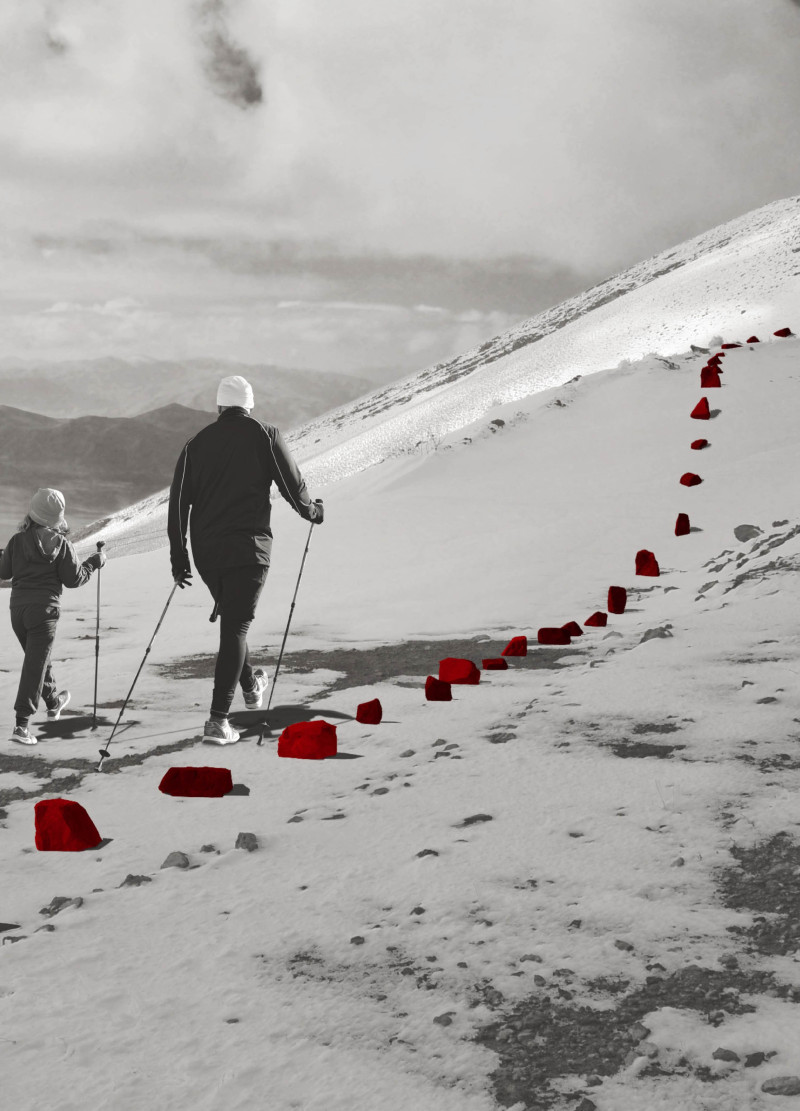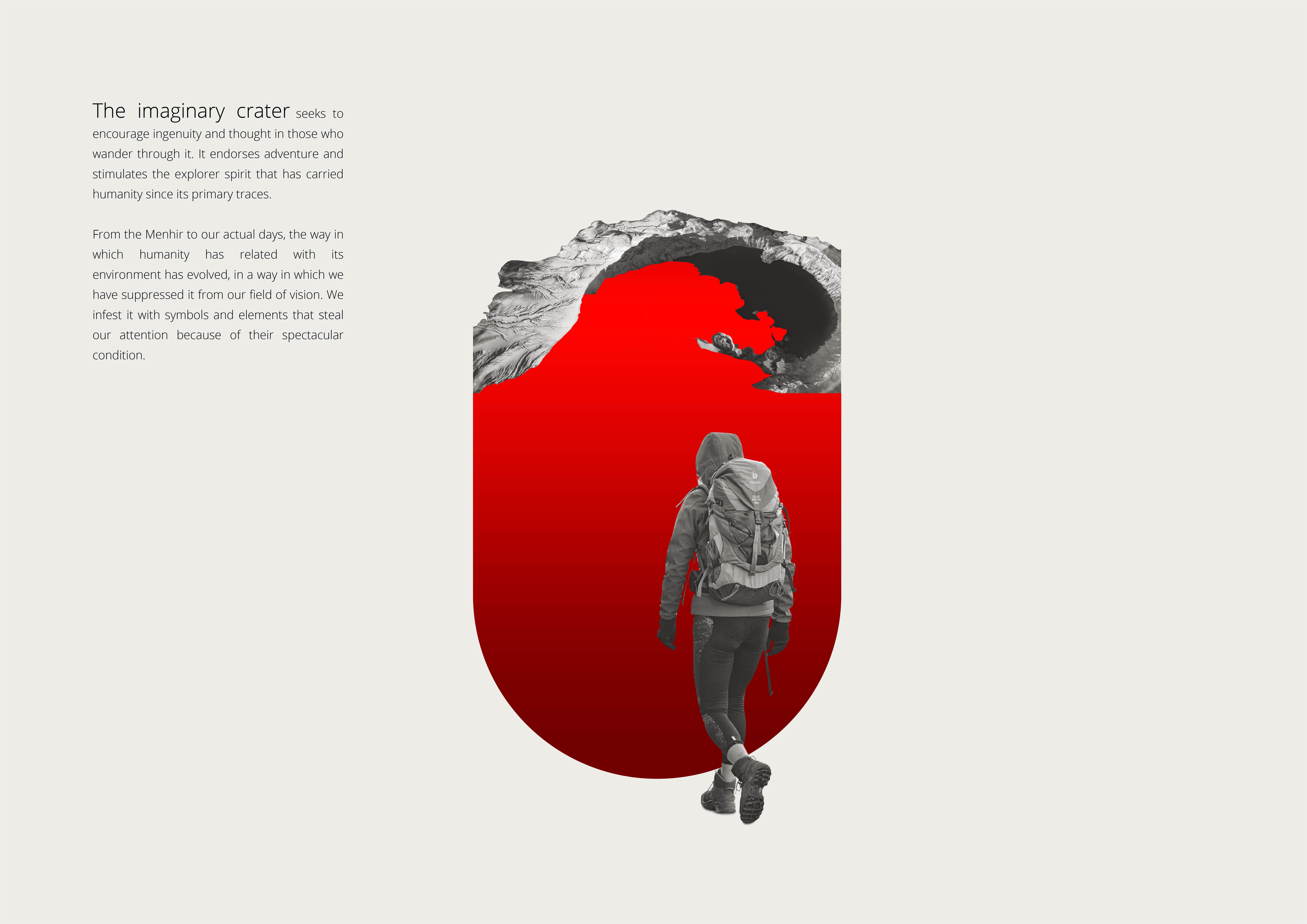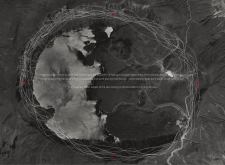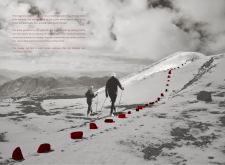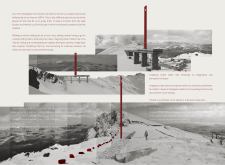5 key facts about this project
## Overview
The project is situated within a volcanic landscape, emphasizing a thoughtful integration with the natural terrain. By inviting participants to explore an organically designed path along the crater’s perimeter, the architecture fosters a connection between individuals and their environment. The conception prioritizes an experiential journey, encouraging contemplation and engagement with the site’s geological features while minimizing alteration to the ecological integrity of the area.
## Spatial Strategy and Experience
A defining characteristic of the project is its distinctive path, crafted from stones covered in a mixture of red paint and lime. This pathway traces an ovoid line around the crater, guiding visitors through the landscape and creating an immersive experience that aligns with the natural topography. The visual cues established by the red stones not only direct movement but also evoke reflections on the human experience in nature, symbolizing past journeys and contemplative practices.
Strategically placed lookout stations constructed from local stone enhance the observational aspects of the design. These structures offer functional spaces for rest and reflection, merging with the environment while inviting visitors to engage with the surrounding vistas. The lookouts serve as integral components that encourage a dynamic interaction with the landscape, enhancing the visitor experience through varied perspectives on the volcanic formations and vistas beyond.
## Materiality and Cultural Significance
The material selection plays a critical role in reinforcing the project’s themes of environmental respect and minimal impact. Local stone reflects the site's natural geology, while the red paint not only establishes visual contrast but also resonates with cultural narratives, particularly in Turkish traditions where red symbolizes vitality and spiritual energy. The use of slender steel elements accentuates the verticality of the lookouts, contributing to a cohesive aesthetic while respecting the landscape's character.
Overall, the materials and design choices create a dialogue between architecture, nature, and local culture, enhancing the project's significance as a holistic exploration of the human-nature relationship.


